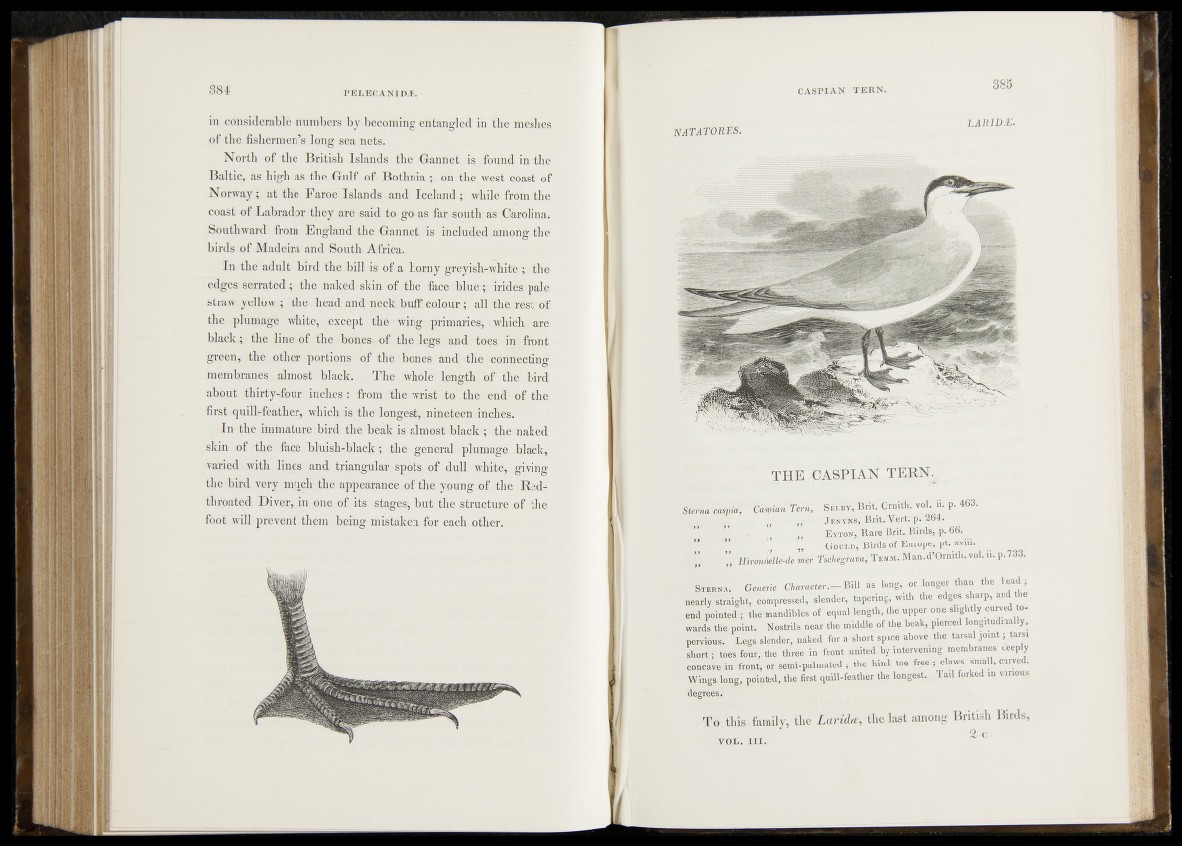
in considerable numbers by becoming entangléd in the meshes
of the fishermen’s long sea nets.
North of the British Islands the Gan net is found in the
Baltic, ns high as the Gulf of Bothnia ; on.the west coast'of
Norway; at the Faroe Islands and Iceland; while from the
coast of Labrador they .are said to go as far south as Carolina-.
-Southward from England the Gannett is included among the
birds of Madeira and South- Africa..;
In the adult bird the bill is of a horny grayishrwhite ; the
edges serrated; the naked- shin of the &ce; bluSdridesjpale
straw yellow; the head end neck buff colourallithefrest of
the plumage white, except the^wing .primari^-^hiehi-.are
black; the line»of the bopes-„of.the legs! and |ËjÉÉ|g Jrónt ■
green, thé other -portions of the phones and\the connecting’
membranes almost black. The whole: length of th e flrd ;
about thirty-four , inches : from the wrist ltd the .end of the
first quillrfeather, which is thelongest,= nineteen, inches.
In the 4mmati»fe birfLthe beak is almost-black:; *the* naked
skin of the facë bluish-black'; the general plumag®u*black,
varied with lines and triangular spots :of dull 1 wh&e^i,giving-
the bird!very much thé 'appearance of the young-'of. the/Red-
thr-pated Diver, in one. of its stages, but the-structure of the
foot will prevent them being mistaken for each other. ‘
NATATORES.
LAR1D2E.
' T H E -GASPIAN.^TERN^ _
ite^^caspia, Ornitfr. v0£’ P*
V e rt, p i-2 6 4 .
• E xton, R a r e B |i t . JB^rds, p. 6 6 . ' ^
Europe,, p t. xvii}.
’'B^rOndel le±’de % e ^ f^ h ^ rk v a ; T em m . M a n .d ’OrnitK. vol. ii. p . 7 33.
' sternmE w ? Q i a r a c t e r . -m as long,» or, lo n g e r th a n th e h e a d ;
m ^ s^ arp’ and*he
e n d p o in t e d th e -m a n d ib l e s of-’ eq u a l.len g th , th e u p p e r o n e s lig h tly curved to wa
rd s ,th e,p o in t: M M n e a r th e rmi ddfe o f/th e b e a t,.p ie rc e d lo n g itu d in a lly ,
pervious. L eg s slen d e r, n ak ed for a sh o rt space above th e ta rs a l j o i n t ; ta rs i
sh o rt I ■ ■ th e th re e In fro n t u n ite d by in te rv en in g m em b ran e s deeply
copeave in fro n t; o r sem i-p a lm ated ; th e h in d toe free ; ,d a w s sm all, curved.
W in g s lo g g ^ p o in te d , th e first q u ill-fe e th e r th e lo n g e st. T a il forked m various
d egrees.
To this family, the Larida, the last among British Birds,
von. h i . a c